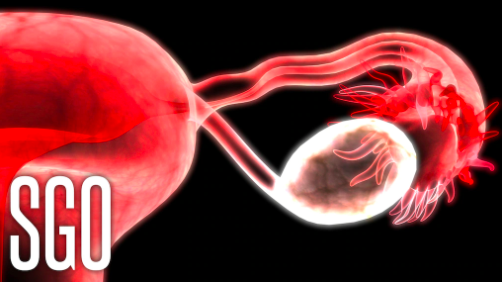Cisplatin/paclitaxel boosts outcomes without increasing complications in registry study.
By Charles Bankhead
Two drugs outperformed one for hyperthermic intraperitoneal chemotherapy (HIPEC) after interval surgical debulking of advanced ovarian cancer, data from a prospective registry showed.
Median progression-free survival (PFS) doubled from 11 months with cisplatin alone to 22.2 months with the addition of paclitaxel. A similar difference existed for the proportion of patients who remained recurrence free at 12 months.
The improvement occurred with no adverse impact on complications, length of hospitalization, or discharge status, Laura Chambers, DO, of the Cleveland Clinic, reported during the virtual Society of Gynecologic Oncology annual meeting.
“We demonstrate that the combination of paclitaxel/cisplatin is associated with a significantly improved progression-free survival and 1-year recurrence-free survival compared to cisplatin alone without significantly increased morbidity in women with optimally cytoreduced stage III and IV ovarian cancer undergoing interval debulking surgery plus HIPEC,” she said during the closing late-breaking abstract session.
“While further validation is needed in larger cohorts, the combination of paclitaxel with cisplatin may be considered at the time of interval debulking with HIPEC in selected women with advanced ovarian cancer,” she said.
The improvements associated with combination chemotherapy did not result from underperformance of single-agent cisplatin, Chambers reported. The median PFS with cisplatin alone approximated that of a recent randomized trial that demonstrated a PFS benefit with cisplatin-based HIPEC versus surgery alone.
The findings continued the revival of an issue that emerged with much fanfare almost 2 decades ago only to fade away in an accumulation of negative data and clinical opinion.
The controversial history of HIPEC began with the GOG 172 trial, which showed an unprecedented 16-month improvement in overall survival (OS) with intraperitoneal (IP) versus intravenous (IV) adjuvant chemotherapy. However, the IP regimen proved difficult to tolerate, as only 42% of patients assigned to the IP arm completed the planned six cycles of therapy.
Subsequent clinical trials yielded mixed results, and toxicity remained an issue with IP regimens. Five years ago the randomized, multiarm GOG 252 study — thought to be the definitive clinical evaluation of IP chemotherapy — showed little difference in PFS between IP and IV regimen, and toxicity continued to complicate IP treatment. Two years ago an update of GOG 252 still showed no PFS or OS benefit with IP chemotherapy.
Interest in HIPEC for ovarian cancer evolved from evidence that hyperthermia increases peritoneal penetration of chemotherapy at the peritoneal surface and cancer sensitivity to chemotherapy. Hyperthermia also induces apoptosis and activates proteins and signaling that are involved in a variety of anticancer activities.
The first large randomized trial of HIPEC in ovarian cancer showed a statistically significant 3.5-month improvement in median PFS and a 12-month improvement in OS in patients who received HIPEC with single-agent cisplatin following neoadjuvant chemotherapy and interval surgical debulking. Chambers and colleagues speculated that adding paclitaxel to cisplatin might further improve outcomes with HIPEC.
Data for the study came from a prospective registry of HIPEC-treated patients with stage III/IV ovarian cancer. The study included patients treated at the Cleveland Clinic from 2017 to 2020, all of whom responded to neoadjuvant chemotherapy prior to interval debulking surgery with optimal cytoreduction to less than 1 cm of residual disease. Following surgery, each patient received HIPEC with single-agent cisplatin or the combination of cisplatin and paclitaxel.
Data analysis included 42 patients who received HIPEC with cisplatin alone and 33 who received cisplatin and paclitaxel. The primary endpoint was PFS. The patient population did not differ significantly with respect to age (about 63), race, body mass index, American Society of Anesthesiologists score, disease histology, comorbidities, genetics, preoperative CA125 level, or number of cycles of neoadjuvant therapy.
Interval debulking for the two treatment groups differed only with respect to operative time, which was slightly longer for the cisplatin group (6.1 vs 5.3 hours, P=0.03). The groups were similar with regard to R0 status, blood loss, type of procedure, surgical complexity, need for intraoperative pressor support, or intraoperative blood transfusion. Rates and types of complications also did not differ between the groups.
More patients in the cisplatin/paclitaxel arm required admission to the intensive care unit (P=0.05). Otherwise, the postoperative complication rates were similar.
The median follow-up duration for all patients was 15.7 months. The 11.2-month absolute difference in median PFS represented a 59% reduction in the hazard for disease progression or death (P=0.011). Recurrence-free survival at 1 year was 82.9% for patients who received cisplatin and paclitaxel versus 36.7% for those who received HIPEC with single-agent cisplatin.
The study added more data to the discussion about HIPEC’s role in the management of advanced ovarian cancer but did not make a case for changing clinical practice, said invited discussant Thomas Herzog, MD, of the University of Cincinnati. In particular, the median PFS (11.0 months) for the single-agent cisplatin HIPEC arm was almost identical to that of patients who received only surgery in the recent randomized trial, he said.
“I think we need some further explanation as to what’s going on there. The strength of the study is that this is a very hot topic, and we could spend a lot more time talking about the value of HIPEC in ovarian cancer,” Herzog said.
“I think that to convert the nonbelievers, unfortunately, we are going to have to see a randomized trial as we move forward,” he added.
This article was published by MedPage Today.


